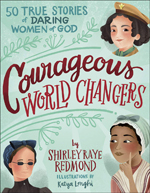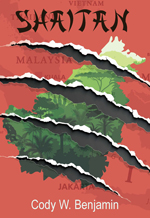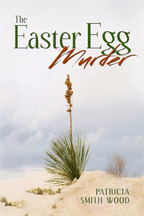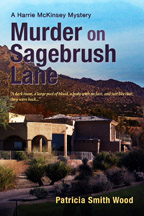Connie Flores retired from a 34-year career with GE Aircraft Engines in Albuquerque and went on to publish her father’s memoir as a gift for his 90th birthday. James A. Woods is a U.S. Army veteran and a well-traveled engineer who helped construct the Sandia Peak Tramway, the longest aerial tram in North America. Our Fascinating Life: The Totally Accidental Trip 1979 (February 2020) tells the story of how James and his wife found themselves, accidentally, on the wrong side of the Berlin Wall. Our Fascinating Life is available on Amazon.
 What is your elevator pitch for Our Fascinating Life?
What is your elevator pitch for Our Fascinating Life?
My father’s story of accidentally finding himself on the other side of the Iron Curtain in the late 1970s is quite unique. But it is only intriguing if you are old enough to recall that part of the Cold War in Berlin. How do we convey upon today’s reader, the fear and desperation so prevalent fifty years ago in Eastern Europe?
When readers turn the last page in the book, what do you hope they’ll take away from it?
We hope that readers would come away feeling that they too have a story to tell. A month ago, the Sunday edition of the Albuquerque Journal had a Stephen Pastis’ Pearls Before Swine comic strip. Pig was intently listening to people sharing their incredible successes and life stories. It pans away to show these vibrant young people were actually aged, with canes and walkers and gray hair, in a retirement home. Rat asks Pig, “What do you get out of talking to older people?” Pig answers, “They weren’t always old.” How vastly has the world changed in your own lifetime? Your story would make a great book!
What unique challenges did this work pose for you?
Dad’s recollection of the specific details behind the Iron Curtain is unclear. We had hoped to include pictures of the autos, clothing, and storefronts of that time. Understandably, he and his wife couldn’t jump out of their car to snap photos during their unexpected trip. Eventually, I was able to purchase several stock photos at Shutterstock to include in our book to help illustrate the starkness of the environment.
And the software. Oh boy! I have been learning about self-publishing by attending SouthWest Writers’ meetings and workshops. So, upon hearing that Amazon Publishing had acquired Create Space, I bravely (or blindly) dove headfirst into Kindle Create. This endeavor proved arduous, as the program still had numerous glitches and was not as user friendly as this rookie required. Not being familiar enough with how publishing programs are supposed to work, I struggled with the basic cut-and-paste functions. Amazon continues to make improvements on the product and, by now, I must be an expert.
Tell us how the book came together.
My father’s manuscript had already been well written decades ago. Complete with the analytical-engineer intellect. Some of the details are technical and oft repeated, as precise as blueprint specifications would demand. Not particularly common for prose, however. I am not a prolific writer, so it took many hours to edit paragraphs.
The cover design with Amazon Publishing was fun and user-friendly. It took a few weeks to gather Dad’s old photos from siblings. The photos came in a PowerPoint flash-drive program, and it took more weeks to peel out each photo and individually save, edit, and save again. More weeks to insert them into the pages. This was where I struggled so much with the Kindle Create program. I don’t believe it is meant to be used as a photo-journal.
Why will readers consider your father an unforgettable character?
James is intelligent with worldly experience and never backs away from any problem. He adores a new challenge or puzzle to solve. He is talented at whatever hobby he picks up. And yet, if there is a family pet in the house, anyone’s house or anyone’s pet, that animal moves in to claim Dad’s lap. All of the old photos of gatherings with family and friends show some animal contently curled up. Dad’s numerous lifelong friends call him Jimbo or Big Jim. Not for his stature, but from all of the other ways a person earns respect among peers. Jim is quick to lend a hand or share stories and a scotch.
Is there a scene in the book you’d love to see play out in a movie?
It would be fun to see a respectable American couple in the 1970s (probably a bit tipsy at the beginning of their big European trip) take the advice of an equally tipsy couple and just drive their rental car onto a ferry. After they have eaten and drunk more while aboard, to find they have been delivered to some unknown port.
What was your favorite part of putting this project together?
Of course, the bonding with my father, which we were both missing. Also, I had made sure to reach out to the siblings and encourage their participation in this special project. We are all proud of the book, just as we are proud of the author.
Was there anything surprising you discovered while doing research for Our Fascinating Life?
It’s astonishing how scarce the photos are of everyday life in East Berlin. From my research of that communist era, people really had to live so secretly, in every aspect of their lives. They were terrified of the KGB and sometimes their own neighbors. It wasn’t just in the movies.
When did you know you wanted to write your father’s story? What prompted the push to begin?
My step-sister in Arizona had asked me if there was something special we could come up with for Dad’s 90th birthday. I had a couple of his manuscripts and had learned just enough from the well-meaning folks at SouthWest Writers to get myself in deep. “What a fabulous idea!”
Looking back to the beginning of putting this project together, what do you know now that you wish you’d known then?
That if Amazon Publishing strongly suggests you install Google Chrome to use with their software, you do just that, and not waste many hours struggling with some other platform, as I did.
As you put the book together, did you ever feel you were revealing too much about your family? How did you deal with that and move forward with the book?
I was careful not to insult, or even potentially give anyone reason to feel they had been slandered.
What advice do you have for writers struggling to begin a writing project?
I, too, struggled. In my case, it took the looming deadline of Dad’s approaching birthday to find motivation. Perhaps, set a deadline for yourself, based on something personal. A birthday or anniversary. Or a season or event. And start by scribbling a couple paragraphs.
 KL Wagoner (writing as Cate Macabe) is the author of This New Mountain: a memoir of AJ Jackson, private investigator, repossessor, and grandmother. Kathy posts to a speculative fiction blog at klwagoner.com and writes about memoir at ThisNewMountain.com.
KL Wagoner (writing as Cate Macabe) is the author of This New Mountain: a memoir of AJ Jackson, private investigator, repossessor, and grandmother. Kathy posts to a speculative fiction blog at klwagoner.com and writes about memoir at ThisNewMountain.com.














